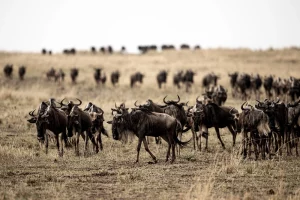The Significance of Serengeti National Park for Wildlife
Located in northern Tanzania, the Serengeti National Park is one of the most iconic wildlife reserves in the world. Spanning over 14,750 square kilometers, the park is home to a vast array of wildlife species and is a critical habitat for the conservation of many endangered animals. The Serengeti National Park holds great importance for both the preservation of wildlife and the tourism industry in Tanzania.
Importance of Serengeti National Park
The Serengeti National Park is renowned for its diverse ecosystems, including grasslands, savannas, and woodlands, which support a wide range of wildlife species. The park is most famous for the annual migration of over two million wildebeest, zebras, and gazelles, known as the Great Migration. This spectacular event sees the herds travel across the plains in search of fresh grazing lands, following the seasonal rains. The Great Migration is a natural wonder that attracts thousands of tourists every year, providing a significant source of revenue for Tanzania’s tourism industry.
In addition to the Great Migration, the Serengeti National Park is home to the "Big Five" – lion, leopard, elephant, buffalo, and rhinoceros – as well as a multitude of other wildlife species, including cheetahs, giraffes, hippos, and crocodiles. The park’s diverse ecosystems provide a vital habitat for these animals, allowing them to thrive in their natural environment. The conservation of the Serengeti National Park is essential for the protection of these species and the preservation of their habitats.
Wildlife Conservation in Serengeti
The Serengeti National Park plays a crucial role in wildlife conservation efforts in Tanzania. The park is part of the Serengeti ecosystem, which also includes the Ngorongoro Conservation Area, Maswa Game Reserve, and Grumeti Game Reserve. Together, these protected areas form one of the largest and most important wildlife habitats in Africa.
The Serengeti National Park is managed by the Tanzania National Parks Authority (TANAPA), which works tirelessly to protect the park’s wildlife and habitats. TANAPA’s rangers patrol the park to prevent poaching and illegal activities, ensuring the safety and well-being of the animals. The park also conducts research and monitoring programs to study the wildlife populations and track their movements, helping to inform conservation strategies and management decisions.
Sunset Africa Safari offers guided tours of the Serengeti National Park, providing visitors with the opportunity to experience the park’s incredible wildlife and natural beauty. The tours are led by experienced guides who are knowledgeable about the park’s ecosystem and wildlife species, offering a unique and educational experience for visitors. For booking requests and inquiries about Sunset Africa Safari’s tours of the Serengeti National Park, clients can contact info@sunsetafricasafari.com.
In conclusion, the Serengeti National Park is a vital sanctuary for wildlife in Tanzania and plays a significant role in the conservation of endangered species. The park’s diverse ecosystems and iconic wildlife make it a must-visit destination for nature lovers and wildlife enthusiasts. By supporting the conservation efforts in the Serengeti National Park, we can ensure the protection of these precious animals and their habitats for future generations to enjoy.


